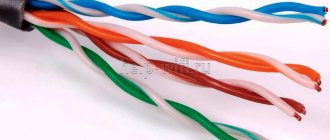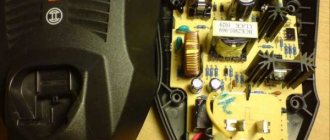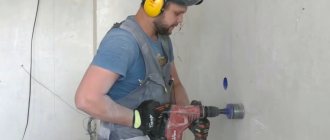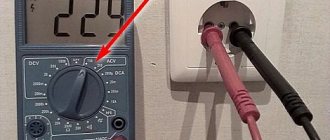Computer technologies have become quite firmly entrenched in our everyday life. It is already quite difficult to imagine the operation of technology separately, without an Internet connection.
Many residential buildings have Ethernet networks installed inside them, which craftsmen create with their own hands. When installing them, the technician must take into account the characteristics and features of the cable layout.
Our advice will explain to the apartment owner how to wire one twisted pair cable so that it can be connected to two computers or other network devices.
This method allows you to avoid additional costs and preserve the already created room design. But it requires compliance with certain technical rules, which we will discuss below.
Peculiarities
The Cablexpert NCA-SP-02 Y-type splitter is made in the form of a patch cord, on one side of which there is one RJ-45 connector, and on the other side there are two RJ-45 input sockets housed in a plastic case. These splitters are convenient for separating ports from sockets in workplaces.
Splitters are used in pairs as a temporary solution for organizing two 100 Mbit/s Ethernet connections over one 4-pair cable of at least category 5e. For example, in cases where it is impossible to lay an additional cable.
The connection type is shown in the diagram.
This product is not suitable for a home network!
Correct installation
Ethernet splitters are useful for connecting two devices in another room where the main signal is coming from. They help save cables, power sockets and in most cases provide a reliable connection. As mentioned earlier, Ethernet splitters come in pairs. One splitter combines two signals from a device (in most cases a router), and the other splits the signals into two lanes, allowing you to connect two devices.
You have a router in room A, and you have two computers in room B, but you only have one Ethernet outlet in each room. In this case, you take one splitter, connect two cables to the router, connect the other end of the cables to the splitter, and then plug one end of the splitter into the wall socket in Room A. This is where the two signals from the router are combined into one. Then take another splitter and plug the side with one port into the wall socket in room B. The combined signal from room A will now be split into two, and you now have two Ethernet ports for two devices in room B.
Read How to set up a SOCKS proxy on Linux
As you can see, one splitter is used to separate two signals and the other is used to separate them, so splitters should always be in pairs. The number of cables and wall outlets is also reduced because there is no need to add another Ethernet wall outlet in each room and no need to run two cables between those outlets. This is just one of the simple scenarios in which Ethernet splitters serve their purpose best.
Coupler
This technology is considered the best option for home repair of cable lines. The result of such work will be a neat connection of the cores, which can not be hidden from prying eyes. The coupler is a compact box equipped with 16 terminals. This technology is used in the design of network sockets.
The ends of the LAN cable are inserted into the box on both sides. This allows you to connect them in the correct order, according to color. Using a screwdriver, the edges of the wires are securely fixed in the blade contact and covered with a lid. The advantage of this method is the absence of loss of Internet signal transmission speed and the absence of the need to use special devices for repairs.
Do Ethernet splitters reduce speed?
Perhaps a common question when using Ethernet splitters is, "Will this slow down the connection?" The answer will depend entirely on the type of network the splitters are used on. Ethernet splitters are based on the fairly old 100BASE-T standard, or better known as Fast Ethernet, which provides a nominal traffic speed of 100 Mbps.
- How to Crimp a Twisted Pair RJ-45 - Network Internet Cable of 8 Cores
There are 4 pairs of wires in a Cat5e Ethernet cable, which means a total of 8 wires in one cable. Fast Ethernet uses only two of the four pairs; the other two pairs are just sitting there, unused. The splitter will take two 100Mbps signals from the router, which means two Ethernet cables, and combine them at one end. These signals will then be split into two 100Mbps signals at the other end. Thus, each port on the receiving end of the splitter can transmit a maximum speed of 100 Mbps. To answer the question, if splitters are used on a 100Mbps network, no, they will not slow down the connection. However, if your router can provide 1Gbps speeds and you use an intermediate splitter, then theoretically the speed will be significantly reduced to 100Mbps. In this case, the splitters have actually reduced the speed and the connection will be slower.
Wire selection
To install an Internet cable in an apartment, you can use any twisted pair cable. The main thing is that there are 4 of these pairs in it. Just come to the store and ask for “wire for the Internet” and they will show you everything you need.
The best option for an apartment is an unshielded cable of category 5E.
They differ only in the manufacturer and materials, but there is no significant difference between manufacturers in use. So take the one that is in the store. Unless you take a lot at once, then buy it in special boxes, where it is laid in a special way and there is a hole for removal. This will help you quickly unwind it and conveniently move it from place to place.
Sometimes it makes sense to consider purchasing shielded wire. First of all, it protects against electromagnetic radiation and removes interference. So you need to take it if the couple passes near electricity lines or equipment that generates such fields. To a lesser extent, the dense foil shell protects against mechanical damage. You may want to consider this option if the cable is accidentally touched or if it ends up in an open area.
Pros and cons
Ethernet splitters can be useful in certain circumstances, but they have many disadvantages. First, they can only provide a maximum speed of 100 Mbps per Ethernet port. On a network that can provide speeds greater than 100 Mbps, resources will not be fully optimized due to this limitation. Moreover, the number of devices you can connect to is limited to two, so if you have more than two devices connected, Ethernet splitters won't be the best option. Additionally, if you only have one remaining Ethernet port in your router, it will be impossible to use splitters at all; some sacrifices need to be made. Moreover, although they reduce the number of cables to connect the two networks, the installation still requires two splitters to operate.
Read 5 reasons why your network needs an advanced IP scanner
On the other hand, Ethernet splitters have several advantages. They cost much less than other network equipment and do not require complex setup. Plus, unlike most network devices, they don't require any software or configuration. Ethernet splitters are an ideal option for home networks where fewer devices are connected, usually a maximum of two devices per room. If you're happy with a 100Mbps connection and only have two devices to connect to, then Ethernet splitters are your best bet.
Ethernet splitters have been around for a long time, but as simple as they are, there aren't many advancements to overcome their limitations. They are still based on the legacy Fast Ethernet standard, which may no longer be as important with today's demand for higher speeds. Although they have their advantages, in most cases they are simply not suitable. Today's technological advances provide hope for the future of Ethernet splitters. Some genius might just bump it up to the Gigabit Ethernet standard.
If you find an error, please select a piece of text and press Ctrl+Enter.
Share on social media networks: —>
Splitter or splitter for antenna and Internet. Why is it needed and how does it work
Anyone who deals with electronics may sometimes come across the word “Slitter” or splitter, especially when it comes to the Internet via a telephone line and a TV antenna. Splitter is translated as a splitter, and this device splits the signal. A splitter is used to divide the signal from an antenna into several TV receivers and to suppress the ADSL Internet signal for a telephone over a telephone line.
There are three televisions in the apartment, and one antenna on the roof of the house. From this antenna, the signal enters the apartment via one coaxial cable, and this signal must be sent to three televisions to watch TV. It would seem that you need to take three sections of cable and connect them parallel to the cable from the antenna that goes into the apartment, but that’s not the case, the signal will go to the TVs insignificantly due to the mismatch of the wave impedance. The main part of the signal will go back to the antenna and will not reach TV tuner. In order to correctly split the signal from the antenna and transmit it with minimal losses to the TVs, a splitter is exactly what is needed. You can buy it in a store, it may also be called a “crab.” You can assemble the splitter yourself; there are different diagrams on the Internet.
There are also splitters for the Internet, the signal of which is transmitted over a telephone line. This Internet is called ADSL, it operates at frequencies from 26 kHz to 1.1 MHz. But a telephone may be connected to the telephone line and during a conversation the Internet signal may interfere with the operation of the telephone. The signal frequencies for the telephone at which a conversation is carried out on the telephone line are from 300 Hz to 3400 Hz, which means that it is necessary to make sure that the telephone frequencies pass well to the telephone set and the frequencies the Internet was suppressed, that's why an ADSL splitter is needed. It is a small box, inside of which there are three parts, two chokes and one capacitor, a splitter circuit for a low-pass filter-low-pass filter is assembled. Such a filter passes a signal with a frequency of approximately 8-9 kHz, everything higher is crushing.
- What is an FTP cable and how to choose a twisted pair cable for home use
The filter circuit and part values are taken from the ADSL splitter, as shown in the video.
Source
What is it for?
Look, a network cable like this usually has 8 wires or 4 pairs. So the maximum data transfer speed can be up to 1000 Mbit per second. But most often in a local network, and even on the Internet, they use only 4 wires or 2 pairs. The remaining 2 pairs are simply not used.
This device is used to connect two computers at once via one cable. That is, 4 wires for one computer and the rest for the second. But at the very end it is usually necessary to install a similar tee, which branches the connection back. Also, some switches with a 1 Gbps port can work with a single connection. They immediately split one connection into two using hardware and software.
Now many will immediately wonder whether it is possible to connect an Internet cable to it, and then connect it via wires to two computers. I will answer right away that this cannot be done. In general, you should already understand that with such a connection, 4 wires are used for different connections. And the Internet input port usually uses all pairs.
RJ-45 pinout
There should be no problems with this, since opposite each contact group there is a color marking that complies with the T568A and T568B standards (can be marked with the letters “A” and “B”, as in the figure below).
It doesn’t matter which standard is used, the main thing is that it is the same type for the LAN, otherwise problems are guaranteed. It is believed that we have adopted a “crimp” type T568B, but this is a rather conditional statement.
If you do not know which standard your provider uses, then you can install it using the pinout of the connector installed on the cable entering the apartment.
What is an Internet cable splitter
Such devices are designed to connect the required cable segments. They help with organizing cable inserts and increasing the length of lines. Thanks to the use of splitters, signal quality is not lost, even if a large number of cables are connected. When choosing a device, the main thing is to pay attention to how many connectors there are and what types they are. The more, the more functional the device. You can use the so-called hub; its functionality is always pleasantly surprising.
Is it possible to branch the Internet over one cable?
There are different connectors that solve this problem. One of the most popular is designated as RJ-45. The tee may have other markings.
Installation and connection are easy to do yourself. But the appearance of the device may be unusual due to some number of wires connected inside. You need to know about connecting the appropriate devices to this connector.
Note! The main thing is to crimp the two cables correctly to connect to the devices. It is allowed to re-crimp the existing cable so that two additional devices can then be connected to it.
To accomplish the task, it is enough to use 4 cores, which remain free, because as standard only the other 4 cores out of 8 are used. A suitable solution is to connect to a second connector. This option is acceptable for a splitter for an Internet cable for 2 computers.
But in some cases the system does not work, because cables with only 4 cores are installed - this option is always cheaper than 8.
One option is to install an additional network adapter inside the computer. Stability and speed of operation, low costs for purchasing additional equipment are the main positive features of such systems that work with the Internet.
Direct access
If home computers are connected to a local network, then they can receive cable Internet if one of them already has such access. To do this you need to do the following:
- On the PC that has access to the World Wide Web, you need to enter the Control Panel and go to the Network Connection Control Center.
- There is a menu on the left side of the screen. In it you need to select the line “Change adapter settings”.
- After clicking on the link, a list of existing connections will open. You need to select the one that relates to the Internet and enter its properties. To do this, simply click on the desired connection with the right mouse button and go to the corresponding menu item.
- You will need the Advanced tab. In it, you need to check the box to make the World Wide Web accessible to the entire local network. After confirming the entry, the Internet will be available on each computer connected to the original one.
Important! Please note that on the settings page there is permission for each computer to manage sharing. If this is undesirable, then you need to check the corresponding line of the “Advanced” tab.
If there are several networks, then on the settings page there is a drop-down list that allows you to make a selection.
After completing these steps, access to the World Wide Web was split.
How to share the Internet on several computers
The easiest way to solve this problem is to use the tools available in the Windows operating system. The main thing is that all devices connect to the same network. Network cards and the necessary cables are the most important elements, without which the problem cannot be solved. Otherwise, the LAN splitters will not work.
An appropriate cable is purchased for the physical connection between all machines. The main device is equipped with two network cards, which provides Internet access.
Note! From the very beginning, you need to give each computer a different name. To configure the parameter, just right-click on the “My Computer” icon. From the context menu that appears, go to the “Properties” item.
The relevant information is checked in the “Computer name” tab. The same workgroup is established for all computers using the same section.
Next, the order of actions is as follows:
All that remains is to go to the properties of the second network card installed on the computer device. Here, go to the “Advanced Settings” tab to allow both types of connections currently available to users. After this, other users will be able to connect to the Internet, which is distributed from one or another computer. All you have to do is click OK.
Note! Don't forget about the TCP/IP Protocol component.
The IP address is filled in by the user himself. The subnet mask is set automatically. Gateway is a line that is left empty by default.
In the lower field, if you wish, you can check the box next to the “Obtain a DNS server automatically” function. Another option is to manually enter the IP address associated with the network card. This is a field called "Preferred DNS Server". After this, the so-called divider can be turned on.
How to connect two PCs via a switch
What are the differences between 3G and 4G networks: features, advantages and disadvantages
When there is only one cable laid from the provider, and it is necessary to connect two computers to the Internet, then some simply switch the cable from one PC to another. However, there is a possibility of how to divide the Internet cable between 2 computers in such a situation.
In this case, it will be necessary to purchase a network hub, also called a “switch”. It provides several places to connect those wires that connect to computers.
You need to disconnect access as follows:
- One of the two computers must be the master. It is this PC that connects to the Internet via the provider’s cable. He needs a second network card. It can be installed in the system unit of this computer or used as an external one via a USB connection. The wire from it is connected to a network hub. The cable from the second computer is also connected there.
- You will need to configure the Internet on the first PC. After this, in the connection properties you need to check the box that allows access to the worldwide network to all computers on the network. After entering and confirming the parameter, the additional network card will be assigned an IP address of 192.168.0.1.
- Next, you need to set the network settings on the second PC. You need to assign it a network address of 192.168.0.2. Next you will need to move on to determining the address of the core gateway. Here you need to put the address of the first computer: 192.168.0.1.
- In order for the second computer to have access to the World Wide Web, the first one must be constantly turned on. This method of branching access can be used in order to work not with two, but with a large number of devices. They will need to indicate an IP address that differs from the first two.
When connecting the switch, you need to consider the following:
- There are configurable and non-configurable devices. It is easier to choose the latter for use, since they are easier to work with.
- You need to choose the right place for this device. In this case, it is necessary to ensure that as little cable as possible is used to connect PCs included in the local network.
- The connection is made using RJ 45. If the sockets belong to non-configurable ports, then you can insert them into any. Configurable ones are intended for those devices through which the local network will be managed.
It must be remembered that for the network hub to work, you need to provide an outlet with a 220 V power supply. If the electricity goes out, the hub will not work.
Joyner and patch cord: detachable connections
The Joyner is one of the most common tools for those interested in extending twisted pair cables or repairing them. Fitters and installers working with Internet providers most often use this technology.
Essentially, this is a LAN connector that looks like a small rectangular box equipped with Rj45 connectors on both sides. In the connector, the twisted pair is crimped on both sides. After that, it is inserted inside the joyner.
Quite often the name splitter is used for the same design. But this approach is not entirely correct. The splitter is equipped with two outputs and one input. The purpose of using such types of equipment is to connect two computers over one 8-wire wire, using 4 wires for each. There is also a splitter, its operating principle is approximately the same.
Patch cords are the name of one of the most common elements for building a Structured Network. It's like a piece of multi-core cable, crimped on both sides using special connectors. The main task is to connect various devices into one system. For convenience, patch cords are produced in different colors to make it easier to operate and find problem areas when they appear.
Important! The disadvantage of such equipment is that there is often a need for additional costs. It doesn't matter what it's called.
Terminals
One simple way is to use special terminals. To do this, it is enough to have terminals, a knife and pliers on hand.
- As with regular crimping, we simply strip the wires.
- We take the first pair and put it inside the terminals. Next, press with a little force with pliers.
- We do this for every couple. Here I also used twisting of the non-exposed part, as in previous methods.
Extending twisted pair cables
Twisting cannot be called the best solution for extending wires. In this case, the connection speed is often lost, and the network may stop working altogether. The main requirement is to confidently use a knife and electrical tape if the work is carried out independently by the owners of the equipment. This build-up can last as long as the cables themselves if the work is done correctly.
Often twists are performed at the same level. In this case, each wire is insulated separately. But there is a connection technology that is more reliable. The main idea is to produce elongation at different levels. Then contact between adjacent elements is practically eliminated.
The features of this process are as follows:
Note! Each twisted pair wire is stripped to about 10 centimeters. The main thing is to ensure that the twists do not touch each other. Stripping wires in any case requires patience and a careful approach.
Important! Care must be taken to ensure that the wires are not cut.
It is better to do the work gradually, moving from one element to another. Only in this case is a stable network signal guaranteed.
The two stripped ends are applied crosswise and twisted with your fingers. It turns out to be a kind of “pigtail” shape. Both wires must twist together, this is the most important thing. You should not allow one wire to be straight and the other to be twisted around it. After the twist is completed, the latter is bent in half. Using pliers, both ends are pressed against each other. Then the mechanical strength of the connection will be maximum.
It is advisable to use a separate insulating tape for each twist. Then tightness and reliability increase. The wires are laid in the sheath of one of the cables, then they are covered with a second similar element. The joint is tightened with insulating tape to make the product look finished. This does not change the separator, as does the basic principle of operation.
Procedure for crimping with a crimper
First, you need to strip the outer layer of insulation by about 2.5–3 cm. For such manipulation, there are special recesses on the crimper. In this case, you need to be very careful not to damage the insulation of the twisted pair wires.
Afterwards, you need to carefully straighten the wires, arranging them in the desired sequence, and cut them so that you get an even perpendicular edge. Next, follow the grooves inside the plug and insert the wires inside so that they fit into the contacts of the plug. The outer insulation of the wire must also go inside. Otherwise, after several bends, the connector will not hold up and the wires will break.
Afterwards, you can crimp the wire and the second fastening point with a crimper, which has a special groove for the 8P network cable. If the crimping is sufficient, the contacts pierce the core insulation. This action has two functions: it creates strong contact and additional fixation.
If the instructions are followed exactly, the twisted pair connector will function as intended. If something went wrong, the colors of the cores were mixed up, etc., it is for such a case that the supply of plugs mentioned above is needed.











